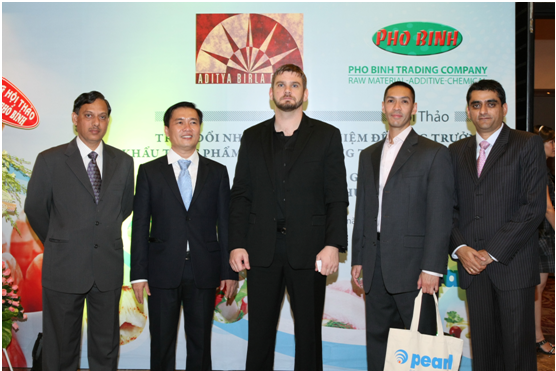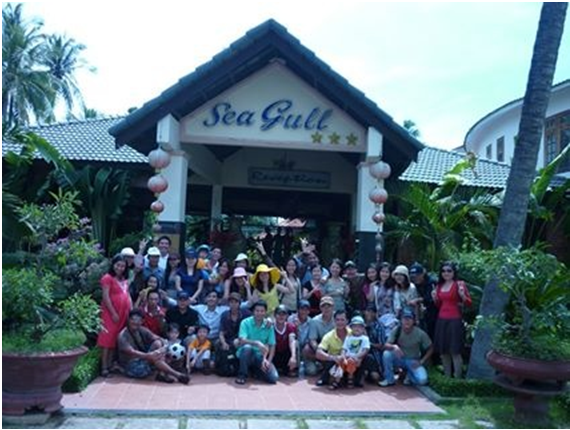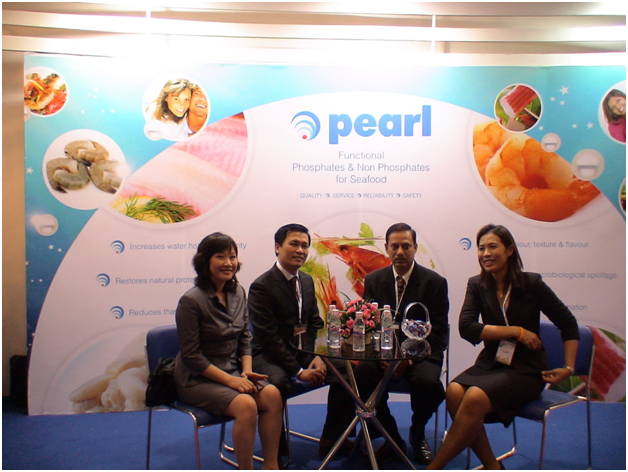USA supply of farmed fish
Source: US Department of Agriculture
The chart is built with the data from the US. Department of Agriculture, and it tells that it is hard to convince the blue line of US. domestic farmed fish supply was harmed or hurt by imports from Vietnam, when the blue line was really moving up. We can say the opposite, that, from 2003, with the ruling of the ITC imposing anti-dumping duties on tra and basa imports from Vietnam, the supply in the US. was cut from 346 thousand tons to 314 thousand tons, which may benefit the US. farmers for an potential increase in price, and in the same way, it hurts the US. consumers with higher price and less choices.
For their part, U.S. producers say cheap, state-subsidized Vietnamese catfish is hurting thousands of U.S. farmers in the Mississippi Delta (Montlake, 2001, p. 1). A representative lawyer for the Catfish Farmers of America says the aim is simply to ensure fair trade. “The government is not looking to lock out imports, but to force exporters to revise prices so they are fair” (Montlake, 2001, p.1).
Measurement in proving a dumping case is still a controversial topic. Saying the US. fish farmers are facing a threat from Vietnam increasing fish imports during early years of 2000s is one-sided story, based on the increased market niche gained by Vietnam products (from 1% late 1990s to some 20% in 2002). What if we look the case from another view, at the progressive domestic supply?
One more issue, using the production cost in India and Bangladesh as what the DOC. did in ruling the case is really fair base? We know it that production rate in these two countries are not comparable to Vietnam. In India, the production rate is 20 tons / ha while that in Mekong Delta is 200 to 300 tons / ha. Certainly, unit cost on fish product in India is higher with such rate, and thus, taking India conditions can not justify “comparable” to production conditions in Vietnam (Nguyen & Doan, 2002, p. 4).
VASEP, (Vietnam’s Association of Seafood Exporters and Processors), maintained that Vietnam’s catfish exports are cheaper than U.S products because of cheaper labor and feed costs, not because any of governmental subsidization.
It is thus still a controversial issue to prove a “material injury and threat” to US. domestic farmers and producers with the above, it will be more difficult to prove that Vietnamese fish imports are the direct cause of the injury or threat.
According to Peacock (2004, p. 8), during 2003, US imports of frozen fish fillets from Vietnam dropped sharply to 3,000 tons (Trade Press). However, prices in the USA for fillets failed to recover as the industry expected, and sales of domestic frozen fillets are down 5% from that of 2002. Farm and process prices have also remained low, averaging $1.25/kg for whole fish and $4,50/kg for fillet, $0.07/kg lower than 2002 and $0.57/kg less than 2001. Vietnamese exporters have been concentrating on new markets, especially the EU. and their wealthier Asian neighbors (p.8)
In conclusion, “the focus of anti-dumping rules (…) is not consumer welfare allocative efficiency” (Lindsey, 1999, p. 3). Has this helped the US.catfish farming industry? The evidence, a year after the countervailing duties were applied, is “no”. Whilst the duties did lead to severe reduction in Vietnamese fillets imports to the USA, prices have not responded preferably for the US. fish farmers. So, while the consumers have been denied a popular new fish product, this has not helped the American producer-a classic “lose-lose” result, or even the case can make that three “lose” if you include Vietnam (Peacock, 2004, p. 13).
The most difficult period for the Vietnamese fillet exporters after the anti-dumping decision (of the US.) towards to end of 2003 and early months of 2004.During 2003, the US.imports of frozen tra and basa fillets from Vietnam dropped by 50%. Then high stocks and low prices created an uncertainty and despondency within the sectors. Some leaders of the industry, like Afiex and Agifish are two processors of An Giang province turned to national market with strong product diversification strategies and were very successful with them (Tu, 2006, p. 18). At the same time, market diversification strategies were vastly promoted. It is also noted that the catfish war was so famous worldwide, that finally could help to bring to Vietnam exporters many new markets. According to Tu (2006, p. 20), recently, tra and basa products have been sold to more than forty countries including new markets such as China, Hongkong, Singapore, Canada, Mexico as well as the EU. and the Eastern Europe countries. The EU. is now the top consumer of tra and basa products from Vietnam, accounting for 37.6% of Vietnam total production (Tu, 2006, p. 20).
According to Tu, (2006, ps. 23 to 27) the catfish war was though a signal to wake up the authority of Vietnam for various policy issues including production master plan, strict hygiene and food safety and quality policy, credit policy, as well as market policy. These efforts could help to build a sustainable development of Vietnam aqua products.









